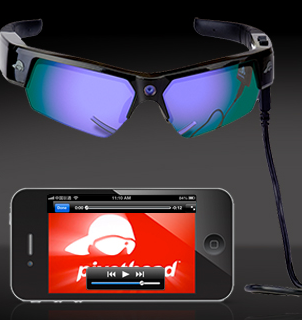How tiny cameras have become big business
March 7, 2013
If you are a fan of action sports you have probably already noticed that putting tiny cameras on people’s heads — and in other unlikely locations — has become big business, BBC News reports.
Pivothead is putting superior technology into sunglasses worn by highway patrol officers in places like Austin, Texas. The glasses are able to capture the details of a driver’s face in high-definition and record conversations at higher bit rates using smaller, more precise microphones.
Brinno Inc. starting making a video camera specially for front mounting onto bicycles. The typical 30 frames-per-second HD sports cameras consumed too much battery power and memory. So the video camera they created lasted seven days on one charge, taking one frame every second — still a satisfactory way to remember any bike ride.
More importantly the efficiency of the unit has made it appealing to law enforcement agencies, including the police department in Newport Beach, California.
Filming with 360 degree video cameras is one of the fastest growing segments of the sports camera scene. But again professionals have found their own uses for this type of camera.
Real estate agents have used it to show off properties — potential buyers sitting at home in front of a computer screen can use the mouse to look at every corner of a room or to see what the view is like over the balcony.
War correspondents have also found it a compelling way to capture the chaos around them.
The Geonaute 360 with three outward facing lenses is designed to sit atop a helmet and record activity in every direction. The camera is not yet for sale, but when it is released it is likely to cost around $299 (£200).
For example, Dan Silveira uses a pair of diving goggles from Liquid Image with a built-in HD camera to record underwater scenes for his TV show about spear fishing.
Celebrities and politicians could easily be targeted by those looking to collect some juicy candid conversation. In America the laws regarding one-way monitoring and recording vary from state to state.
As the equipment becomes cheaper and more appealing in the professional world, those regulations are likely to be tested by both sides.
